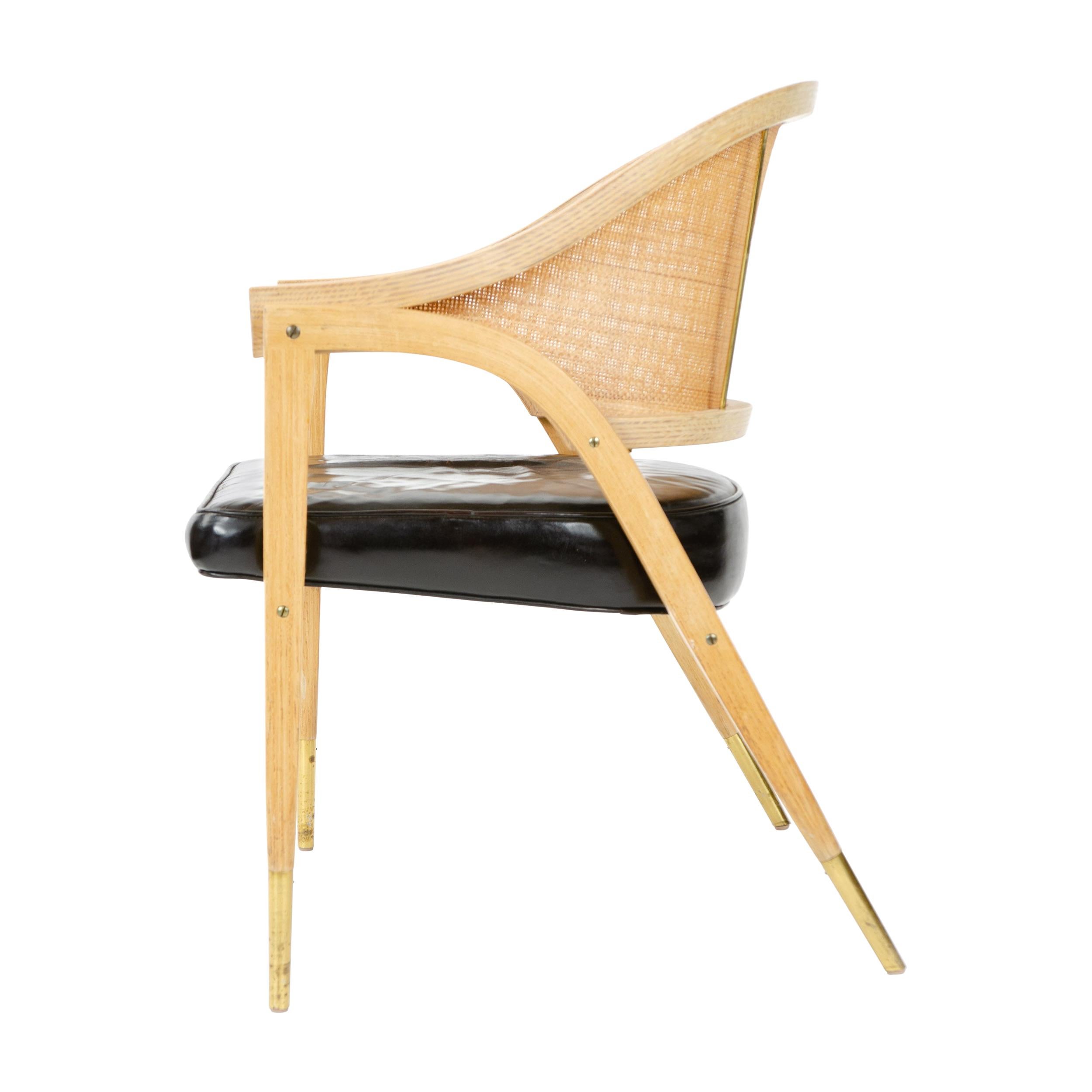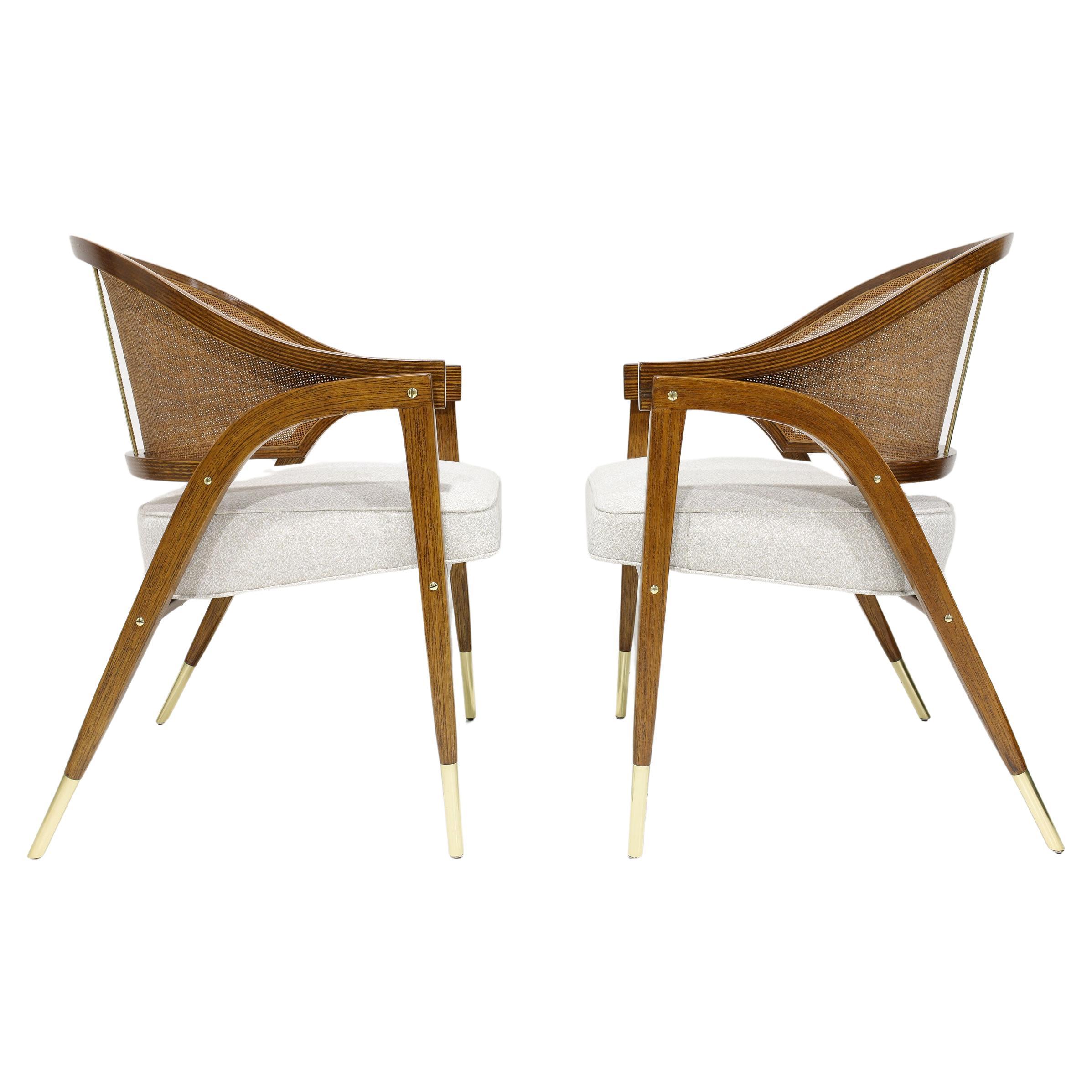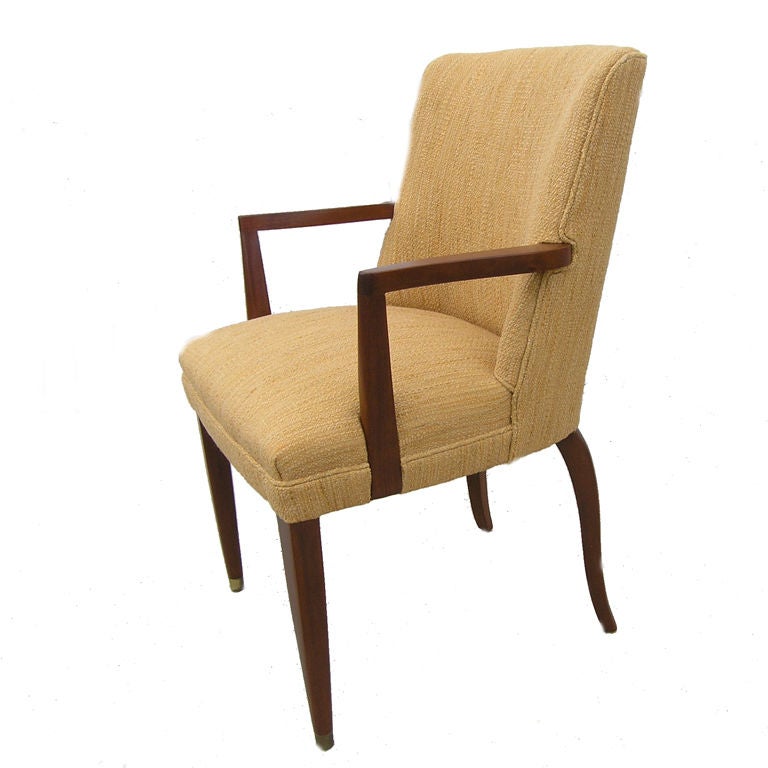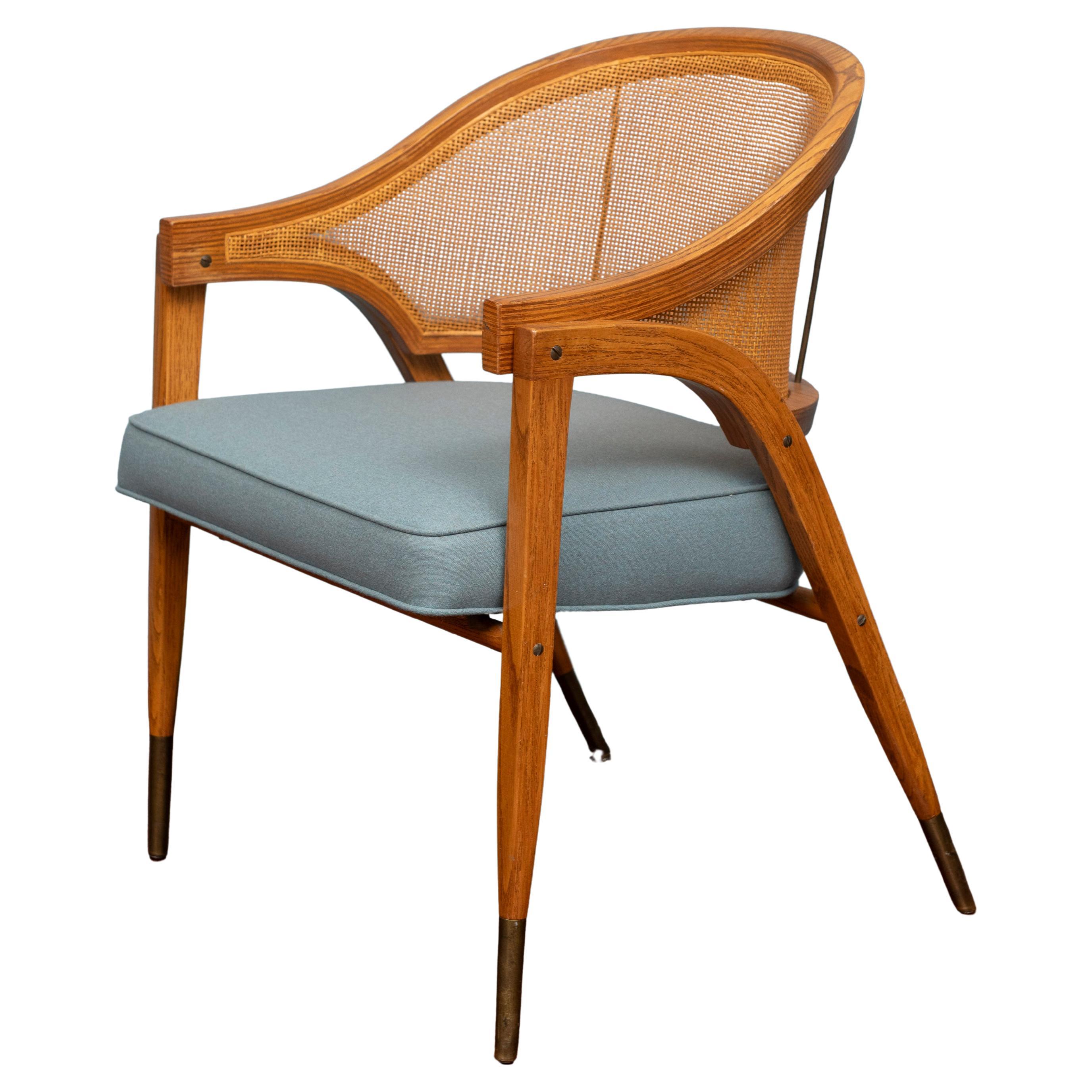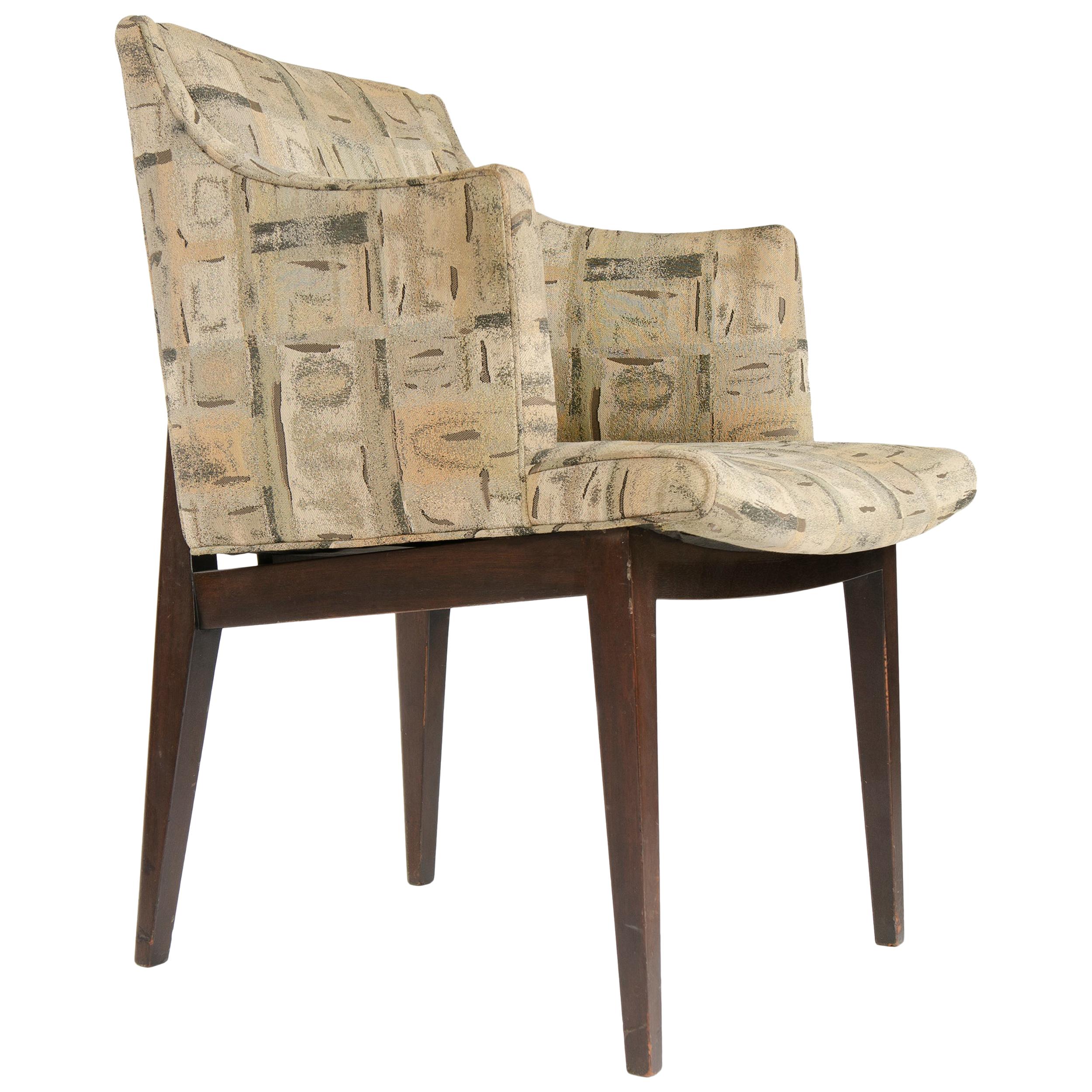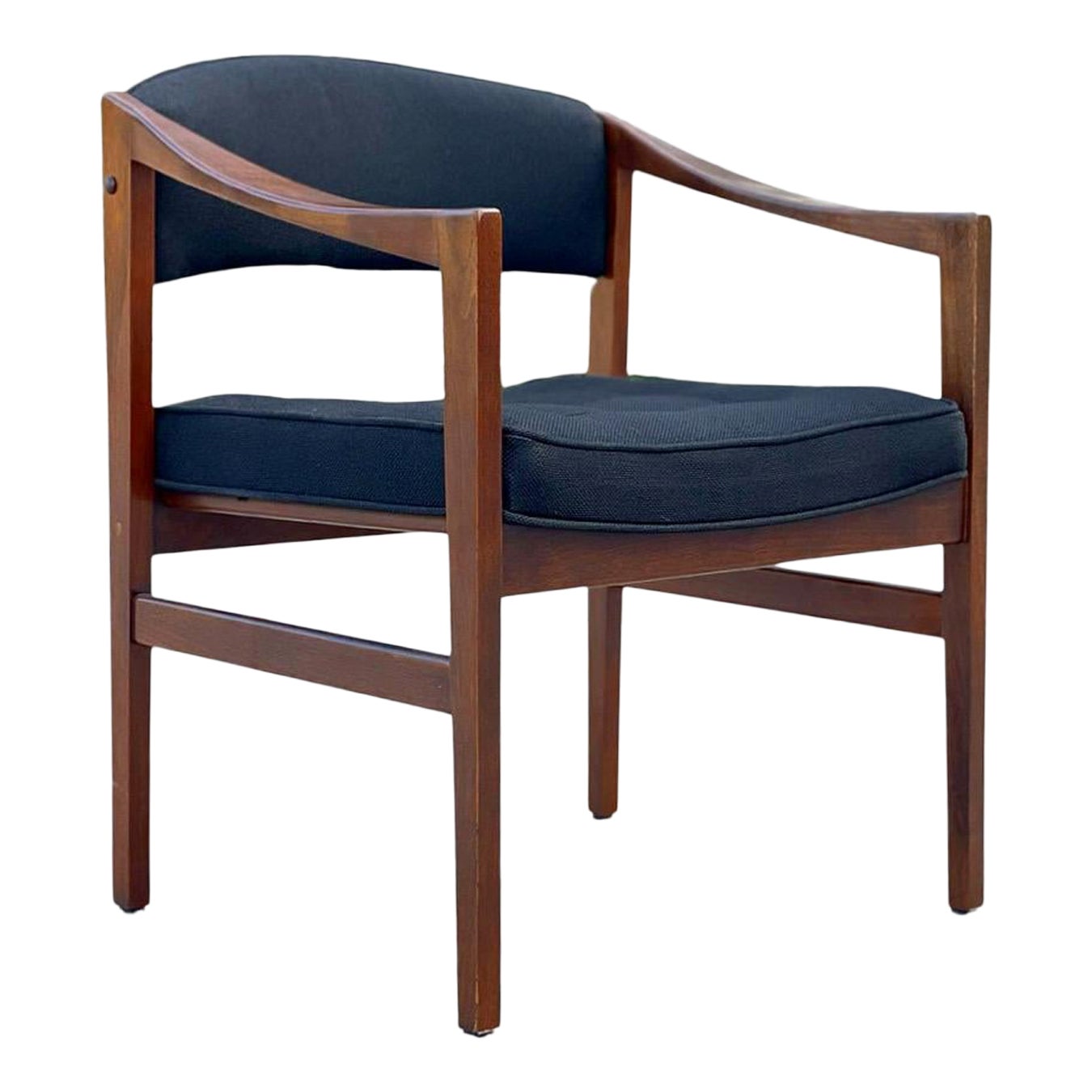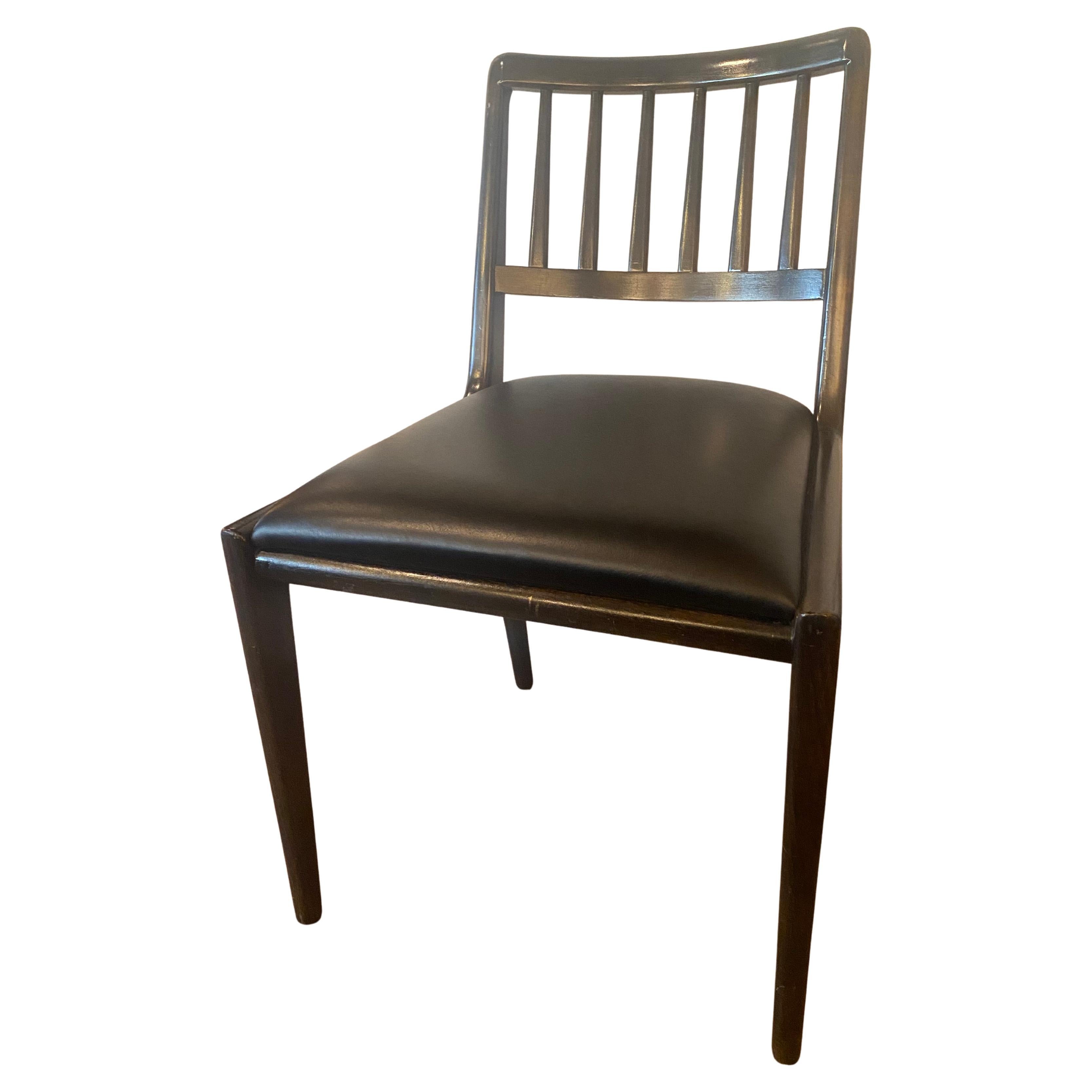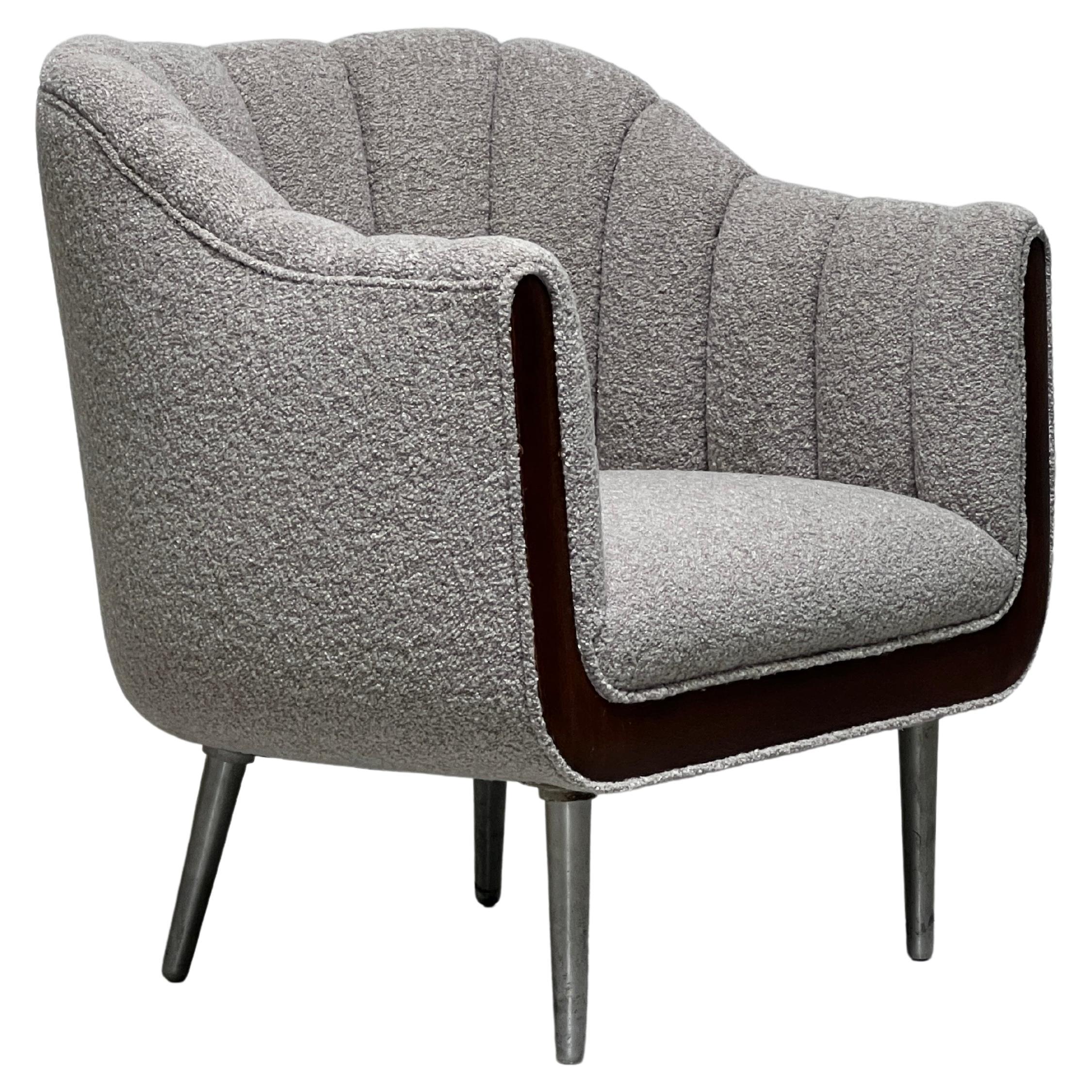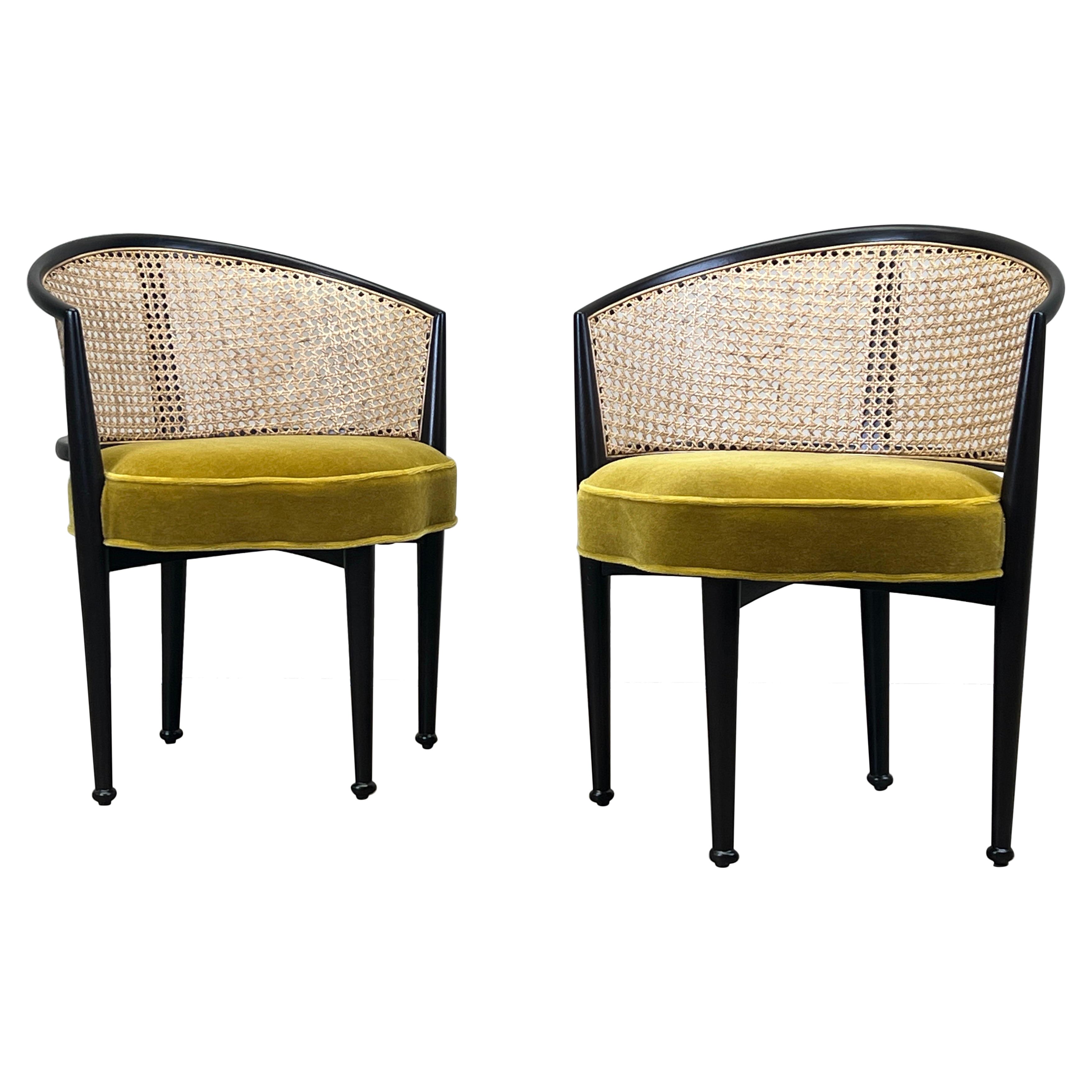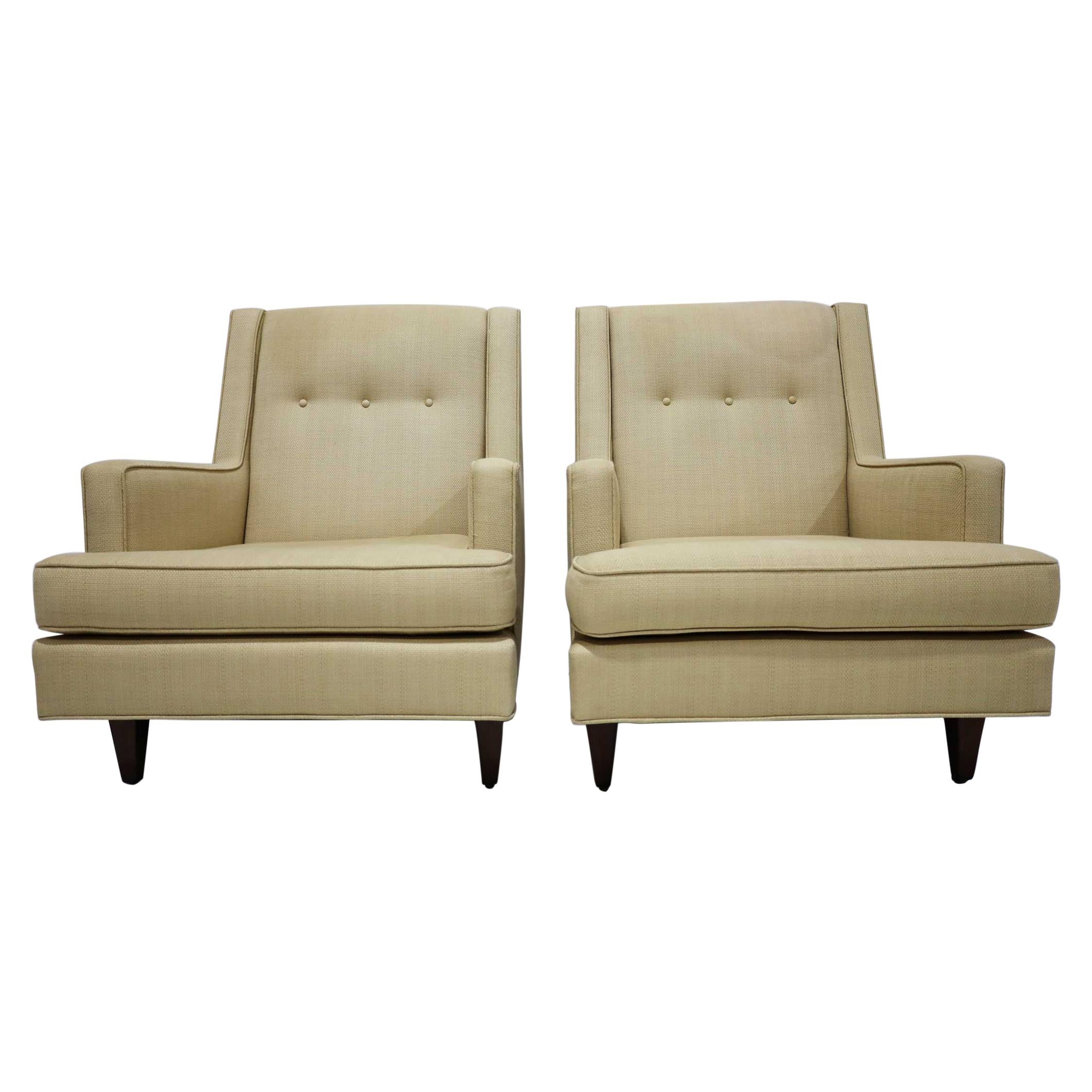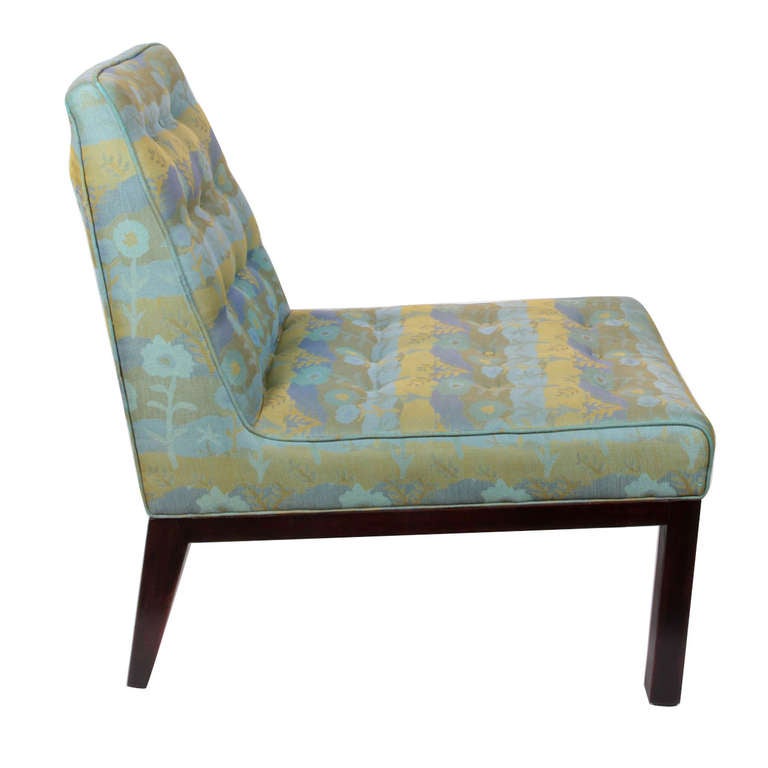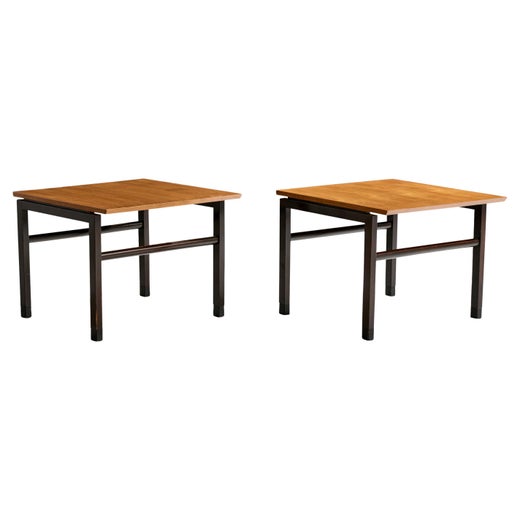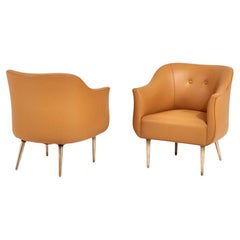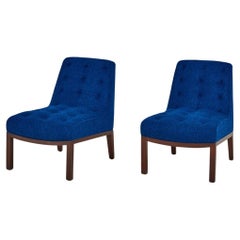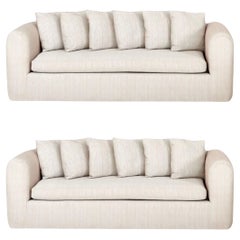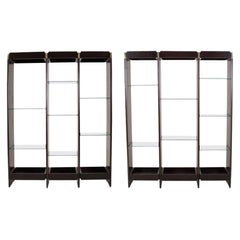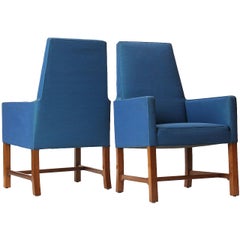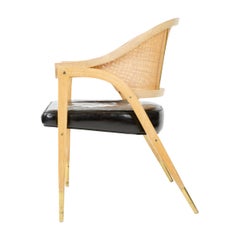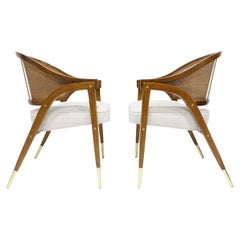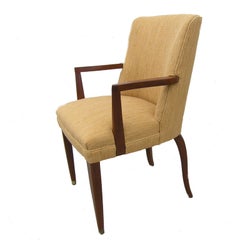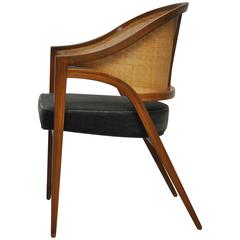
Dunbar "Y-Back Captain Chair" by Edward Wormley
View Similar Items
Dunbar "Y-Back Captain Chair" by Edward Wormley
About the Item
- Creator:Edward Wormley (Designer)
- Dimensions:Height: 32 in (81.28 cm)Width: 22 in (55.88 cm)Depth: 22 in (55.88 cm)Seat Height: 18 in (45.72 cm)
- Style:Mid-Century Modern (Of the Period)
- Materials and Techniques:
- Place of Origin:
- Period:
- Date of Manufacture:1950
- Condition:
- Seller Location:Chicago, IL
- Reference Number:Seller: 14471stDibs: LU91875766643
Edward Wormley
As the longtime director of design for the Dunbar furniture company, Edward Wormley was, along with such peers as George Nelson at Herman Miller Inc., and Florence Knoll of Knoll Inc., one of the leading forces in bringing modern design into American homes in the mid-20th century. Not an axiomatic modernist, Wormley deeply appreciated traditional design, and consequently his vintage seating, storage cabinets, bar carts and other work has an understated warmth and a timeless quality that sets it apart from other furnishings of the era.
Wormley was born in rural Illinois and as a teenager took correspondence courses from the New York School of Interior Design. He later attended the Art Institute of Chicago but ran out of money for tuition before he could graduate. Marshall Field hired Wormley in 1930 to design a line of reproduction 18th-century English furniture; the following year he was hired by the Indiana-based Dunbar, where he quickly distinguished himself. It was a good match.
Dunbar was an unusual firm: it did not use automated production systems; its pieces were mostly hand-constructed. For his part, Wormley did not use metal as a major component of furniture; he liked craft elements such as caned seatbacks, tambour drawers, or the woven-wood cabinet fronts seen on his Model 5666 sideboard of 1956. He designed two lines for Dunbar each year — one traditional, one modern — until 1944, by which time the contemporary pieces had become the clear best sellers.
Many of Wormley’s signature pieces — chairs, sofas, tables and more — are modern interpretations of traditional forms. His 1946 Riemerschmid Chair — an example is in the collection of the Museum of Modern Art — recapitulates a late 19th-century German design. The long, slender finials of his Model 5580 dining chairs are based on those of Louis XVI chairs; his Listen-to-Me Chaise (1948) has a gentle Rococo curve; the “Precedent” line that Wormley designed for Drexel Furniture in 1947 is a simplified, pared-down take on muscular Georgian furniture. But he could invent new forms, as his Magazine table of 1953, with its bent wood pockets, and his tiered Magazine Tree (1947), both show. And Wormley kept his eye on design currents, creating a series of tables with tops that incorporate tiles and roundels by the great modern ceramicists Otto and Gertrud Natzler.
As the vintage items on 1stDibs demonstrate, Edward Wormley conceived of a subdued sort of modernism, designing furniture that fits into any decorating scheme and does not shout for attention.
More From This Seller
View AllVintage 1960s American Mid-Century Modern Lounge Chairs
Brass
Vintage 1960s American Mid-Century Modern Slipper Chairs
Bouclé, Walnut
Vintage 1970s American Mid-Century Modern Sofas
Silk
Vintage 1960s American Mid-Century Modern Bookcases
Brass
Vintage 1950s American Mid-Century Modern Lounge Chairs
Upholstery, Cane, Mahogany, Rosewood
Vintage 1950s American Mid-Century Modern Slipper Chairs
Upholstery, Wood
You May Also Like
Vintage 1950s American Mid-Century Modern Armchairs
Walnut, Upholstery
Vintage 1950s American Mid-Century Modern Armchairs
Brass
20th Century American Mid-Century Modern Chairs
Brass
Vintage 1950s American Mid-Century Modern Armchairs
Mahogany
Vintage 1950s American Mid-Century Modern Armchairs
Cane, Oak
Vintage 1950s Mid-Century Modern Armchairs
Mahogany
